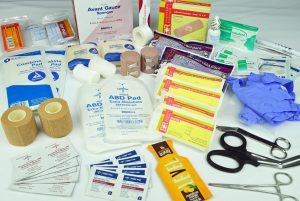
A clinical diagnosis of Huntington’s disease is based on the presence of involuntary movements.
At first, it can be a state of great nervousness, signs of impatience, jerking movements of the hands and feet or excessive agitation.
- Affected individuals may experience some clumsiness, changes in their writing or difficulties in performing certain daily activities such as driving. The first physical symptoms of Huntington’s disease are also often accompanied by mild cognitive impairment.
- These may include difficulties in organizing daily activities or adapting to new situations.
- Some sufferers will seem to have poor memory and their professional activities may require more time. Their ability to make decisions and their attention begins to weaken. For a senior, this change in life may lead to consider housing in a retirement home.
- The first emotional symptoms can be just as subtle.
There are longer periods of depression, apathy, irritability, impulsivity, and sometimes changes in personality. At this stage, the affected people are still able to function quite normally at home and at work.
Intermediate stage of Huntington’s disease
As the disease progresses, the symptoms intensify. The physical disorders of the starting stages are gradually transformed into more pronounced involuntary movements such as tics and jerky movements of the head, neck, arms and legs (chorea).
These movements are accompanied by difficulties of gait, language and swallowing. At this stage of Huntington’s disease, sufferers often seem to have drunk too much: they stagger and speak without articulating.
They are finding it increasingly difficult to work and perform household chores, but remain able to perform most activities of daily living.
Advanced stage of Huntington’s disease
It is typical to note that involuntary movements are rarer and limbs stiffen more. Sufferers are no longer able to perform the activities of daily living and generally need a professional help, at home or in a retirement home. It is common for them to have difficulty swallowing, communicating and losing weight.
- Death usually occurs 15 to 20 years after the onset of the disease.
- The death is not caused by Huntington’s disease, but by its complications: suffocation, pulmonary embolism, pneumonia or other infections.
What are the treatments for Huntington’s disease?
To treat the symptoms of Huntington’s disease and help patients have greater control of their movements and moods, there are different drug solutions.
Unfortunately, Huntington’s disease, formerly known as Huntington’s Chorea, is still an incurable disease. Although there is currently no cure able to cure it, different treatments are possible. They can reduce its various manifestations and prevent any complications that could be fatal to the patient.
Drug treatments
In order to help patients suffering from Huntington ‘s disease to have a better control of their movements and a certain constancy in their moods, the doctors recommend various medical treatments:
The use of antipsychotics such as haloperidol, olanzapine or chlorpromazine is recommended if the patient is suffering from violent delirium or hallucinatory episodes. The use of tranquilizers such as paroxetine, benzodiazepines, beta-blockers or venlafaxine is required when the patient’s behaviour becomes unmanageable. The use of the Balance CBD happens to be quite important in this illness now.
The use of botulinum toxin makes it possible to reduce dystonia, namely those disorders of muscle tone characterized by involuntary muscle contractions and responsible for abnormal attitudes. Dystonia may be accompanied by tremors. Thus, botulinum toxin helps prevent cramps, especially in the jaw.



